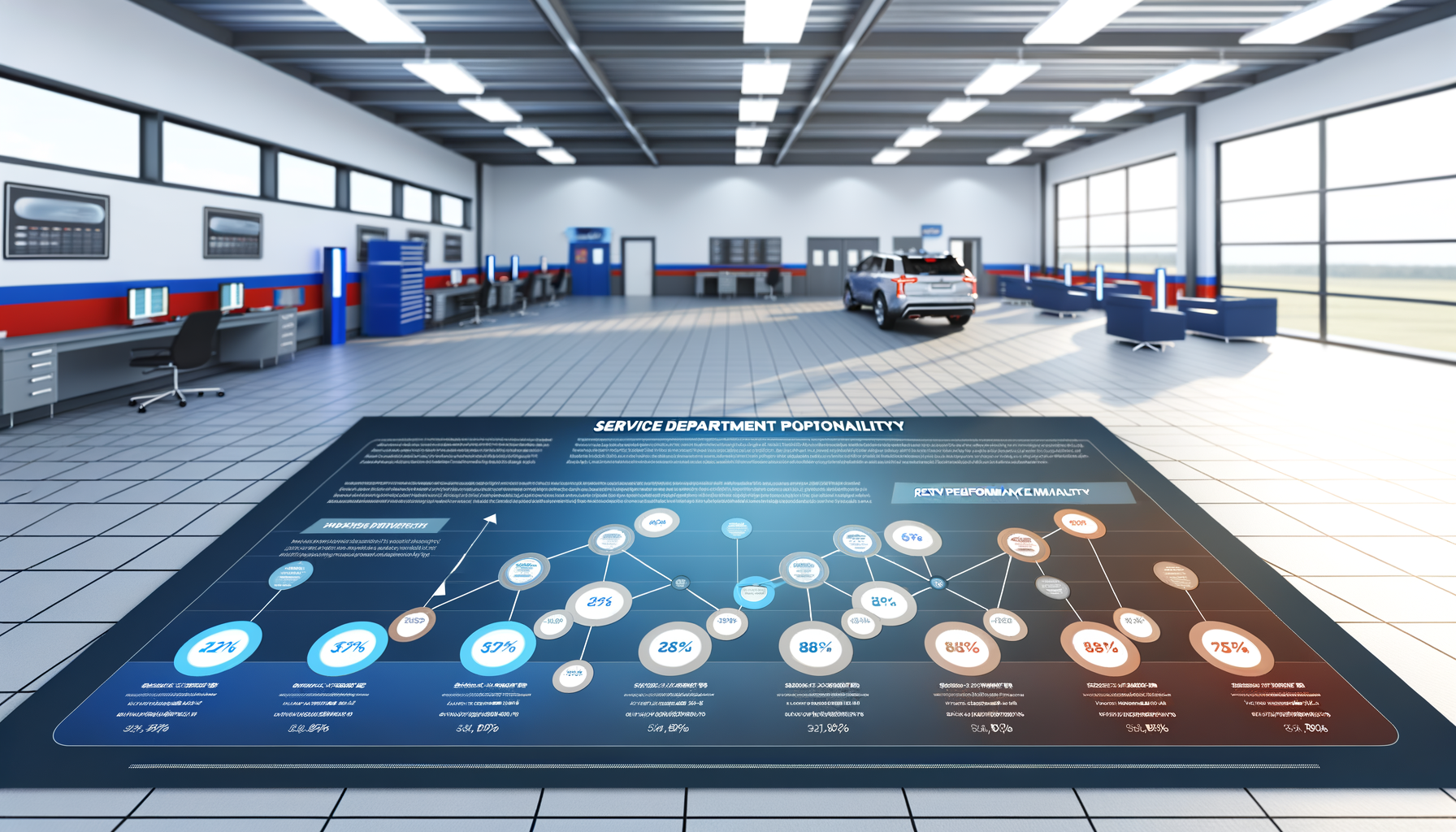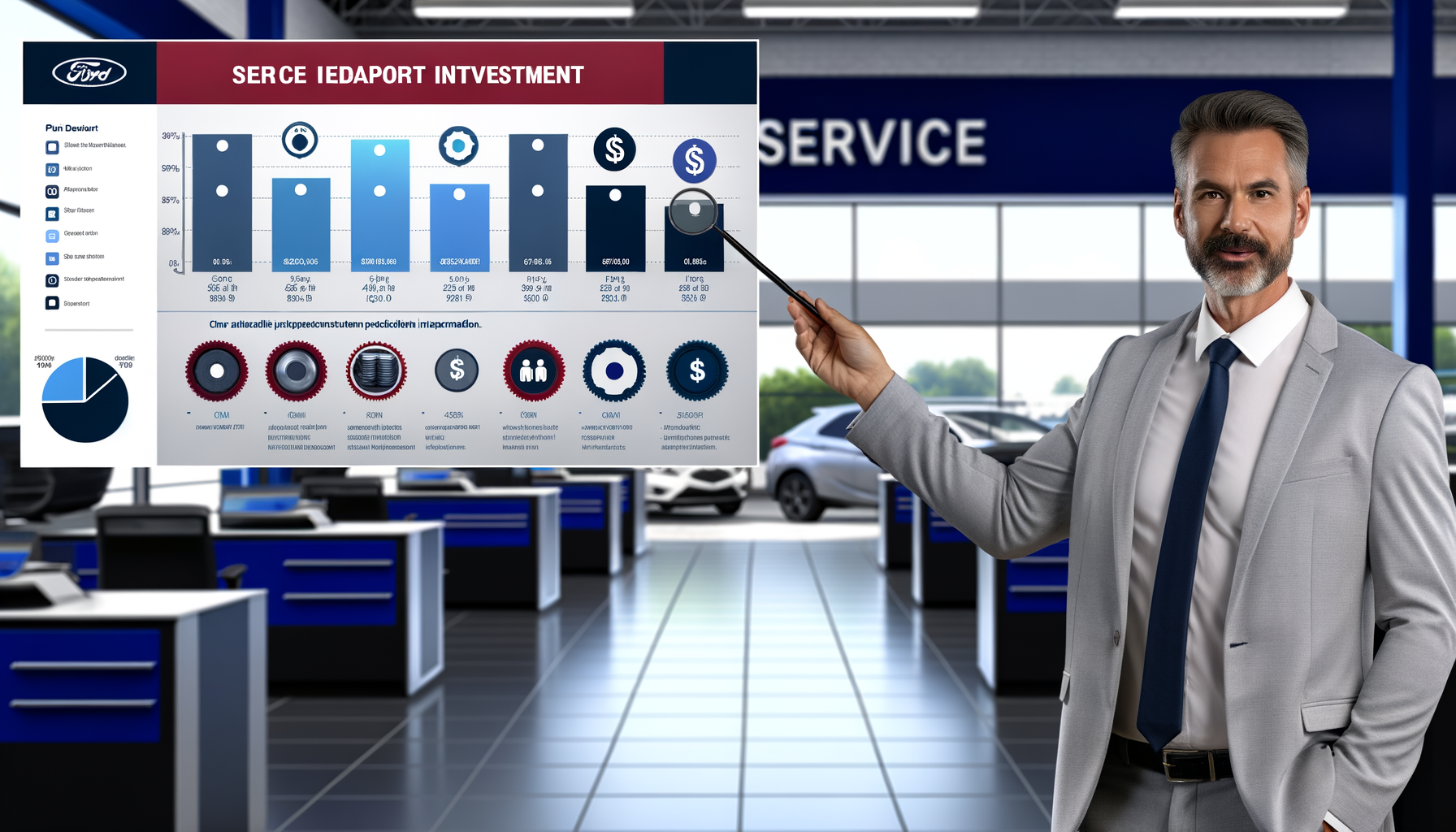Profit Pitstop: Dynamic Strategies to Race Past Service Department Challenges

Understanding the Profitability Matrix for Auto Service Departments

Profitability in auto service departments is a multifaceted concept, influenced by numerous variables such as labor efficiency, parts management, and customer retention. This section delves into the key performance indicators (KPIs) critical to measuring and enhancing profitability.
By dissecting metrics like average repair order (ARO) value, labor utilization rate, and parts sales ratio, service managers can gain a clearer picture of their department's financial health.
To implement effective KPI tracking, service departments should adopt an integrated management system that consolidates data from various channels into actionable insights.
Leveraging Technology to Drive Revenue: Automation and Analytics

The integration of automation and analytics is revolutionizing service department operations, enabling more precise and efficient management.
Advanced analytics provide insights into technician performance, parts inventory levels, and customer preferences, allowing for data-driven decisions that enhance revenue.
Implementing automated scheduling and parts ordering systems can significantly reduce operational costs and improve service throughput.
Optimizing Service Department Workflows for Maximum Efficiency

Streamlined workflows are essential for maximizing efficiency in service departments, directly impacting profitability by reducing cycle times and increasing throughput.
Key strategies include adopting lean management principles, optimizing technician allocation, and enhancing inter-departmental communication.
A step-by-step approach to workflow optimization involves mapping existing processes, identifying bottlenecks, and implementing targeted improvements.
Enhancing Customer Satisfaction to Improve Retention and Profits

Customer satisfaction is directly linked to profitability, with studies showing that a 5% increase in customer retention can boost profits by 25% to 95%.
Service departments can enhance satisfaction by providing transparent pricing, offering digital service options, and ensuring consistent communication.
Practical steps include implementing customer feedback loops, training staff in customer service excellence, and personalizing service experiences.
Strategic Staffing: Mitigating Turnover and Boosting Productivity

High turnover in service departments can severely impact productivity and profitability. Addressing this requires strategic staffing and a positive workplace culture.
Offering competitive salaries, continuous training, and career advancement opportunities are key to retaining top talent.
Creating a supportive work environment that values and recognizes employee contributions can reduce turnover rates.
Navigating the Challenges of Electric Vehicle Servicing

With a 15% increase in EV-related repairs, service departments must adapt to new skill requirements and safety protocols.
Investing in specialized training and equipment for EV servicing can position departments as leaders in this growing market.
Implement a phased training program to upskill technicians and ensure compliance with new OEM requirements.
Implementing a Robust ROI Calculation Framework

Accurate ROI calculations are crucial for evaluating the financial success of service department initiatives.
A robust framework involves setting clear objectives, measuring outcomes against benchmarks, and adjusting strategies based on findings.
Step-by-step, departments should define key metrics, collect data systematically, and analyze results to inform decision-making.
Related Topics
Ready to take your service department to the next level?
Schedule your demo today and experience the power of Auto Pro Solutions.
Schedule Demo